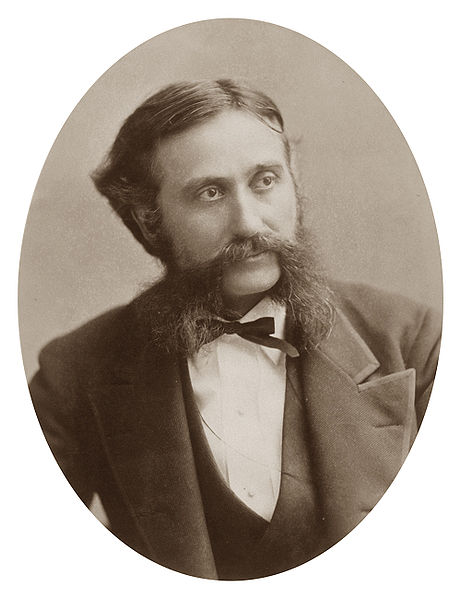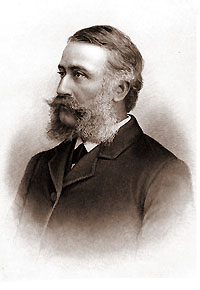<Back to Index>
- Historian Hubert Howe Bancroft, 1832
- Composer Hans Erich Pfitzner, 1869
- Emperor of Japan Uda, 867
PAGE SPONSOR


Hubert Howe Bancroft (May 5, 1832 – March 2, 1918) was an American historian and ethnologist who wrote and published works concerning the western United States, Texas, Mexico, Central America, British Columbia and Alaska.
Bancroft was born in Granville, Ohio, into a family of staunch abolitionists. The family home was a station on the Underground Railroad and now a dormitory on the campus of Denison University. He attended the Doane Academy in Granville for a year, and he then became a clerk in his brother - in - law's bookstore in Buffalo, New York. During March 1852, he was sent to San Francisco, California, where he initiated and managed a regional office of the business. He also began his own publishing house. During 1868, he resigned from his business in favor of his brother, A.L. Bancroft. He had accumulated a great library of historical material, and abandoned business to devote himself entirely to writing and publishing history.
Bancroft's library consisted of books, maps, and printed and manuscript documents, including a large number of narratives dictated to Bancroft or his assistants by pioneers, settlers, and statesmen. The indexing of this vast collection employed six persons for ten years. The library was relocated during 1881 to a fireproof building, and during 1900 numbered about 45,000 volumes.
He developed a plan to publish a history of 39 volumes of the history of the entire Pacific coast region of North America, from Central America to Alaska. He employed collaborators for the preliminary work, and then revised it all, and wrote the most important chapters himself. During 1886 the publishing establishment of A.L. Bancroft & Company burned, and the sheets of seven volumes of the history he had written were destroyed.
Bancroft is interred in the Cypress Lawn Memorial Park in Colma, California. The Bancroft Library at UC Berkeley, named in his honor, was founded when Bancroft donated his book collection to the University of California in 1905. Part of a property Bancroft bought (c.1880) in Contra Costa County, California, is now the Ruth Bancroft Garden. Bancroft
published a well known group of local histories. Having formed a large
collection of materials concerning the history of the Pacific coast, he
then employed research and writing assistants to organize and produce
statements of facts for large sections of a proposed general history.
Originally he seems to have intended to use these statements of facts
as the basis of a narrative which he himself would write; but as the
work progressed he came to use the statements as they were, with only
slight changes. He said his assistants were capable investigators, and
there is independent evidence to show that some of them deserved his
confidence. (Frances Fuller Victor,
in particular, was a well regarded writer in her own right.) However,
his failure to acknowledge each contribution created doubt concerning
the value of any particular section. Overall, although Bancroft
considered himself the author of the work, it is more accurate to
consider him an editor and compiler. Neither
Bancroft, nor most of his assistants, had preparatory training
sufficient to save them from the inadequacies common to historical
works of this period. Their writing sometimes represented personal
opinions and enthusiasms, and their often good books consequently have
some serious defects. However, they were generally very well received
during their time. Historian Francis Parkman gave Bancroft's The Native Races much credit in the magazine The North American Review. Lewis H. Morgan, however, was more critical. Based on his newly published theory of Indian culture, in an article named Montezuma's Dinner,
Morgan completely reversed Parkman's verdict and created doubt in the
minds of the public about this and other volumes of the series.
Bancroft's response to Morgan's criticism suggests that he did not
understand Morgan's theory, which is now generally accepted by scholars.
Several schools are named for Bancroft, including Bancroft Middle School in Long Beach, California, and Hubert H. Bancroft Elementary school in Sacramento.